
While visiting the Evergreen Aviation & Space Museum in McMinnville, OR, USA over the weekend, I came across a hack.
In addition to the excellent displays on site and an area where one can watch a video on repeat, the museum offers guided tours for a very reasonable price. And it was during this tour that my life as an aviation geek changed forever. Why? I got to visit the flight deck of the H4 and even sit in the pilots seat where Howard Hughes sat when he flew the plane almost 75 years ago.
It was later in the tour, after I’d had a moment to take in the enormity of sitting in the seat, that I found a wonderful hack to share with you all: and it’s all about beach balls.
The History
The Hughes H4 Hercules is probably better known as the “Spruce Goose” despite it mostly being made out of birch. The Hughes H4 Hercules was the brain child of Howard Hughes, and eccentric but talented engineer, pilot, and business mogul. The H4 constituted a nearly unbelievable undertaking: it was bigger and more powerful than any aircraft ever flown at that time. And instead of being made of aluminum, which was in short supply during the war, it was made from a novel composite called Duramold.
Duramold was invented some years earlier and licensed to Hughes for the Hercules project. Duramold was made with multiple layers of birch or poplar wood impregnated with resin. Duramold was considered to be a technological feat at the time, and given that the wood is still in perfect shape 75 years later, it clearly was. And although several thousands of pounds of nails were used in constructing the Hercules, once the resin cured, they were able to be removed.
Hughes was making the largest airplane to date. A failure of the Hercules, of any nature, would have been disastrous. Not just for the aircraft, but it would have been a death blow to the reputation of Howard Hughes himself, who had already taken a lot of heat for producing a wooden aircraft. Opponents to his project had given him no end of difficulty, and he’d even been hauled in front of the Senate, an audience before whom he swore the following:
“The Hercules was a monumental undertaking. It is the largest aircraft ever built. It is over five stories tall with a wingspan longer than a football field. That’s more than a city block. Now, I put the sweat of my life into this thing. I have my reputation all rolled up in it and I have stated several times that if it’s a failure, I’ll probably leave this country and never come back. And I mean it.” – Howard Hughes
The Beach Balls Hack
With all this weight on the shoulders of the engineers and builders of the aircraft, one does not have to use much imagination to put themselves in an engineers mind in the 1940’s: Somebody wasn’t sure the pontoons would remain water tight, and during a tense meeting, perhaps a young engineer remembered his family outing over the weekend, and called out “Beach Balls!” Likely this meeting was followed up by trips to local stores, where the shelves were emptied of all beach balls, disappointing beach bound kids and adults alike until the next shipment came in. The beach balls were inflated and dropped into the pontoons, making sure that the pontoons could not fill with water, even if they were leaky.
How did it turn out? Hughes loaded the H4 with reporters, and took the flying boat on two taxi runs and then came back to dock. Some reporters left, eager to get the scoop on the Big Story, only to turn back to find the Hercules taxiing back out to take its historic flight.
Success!
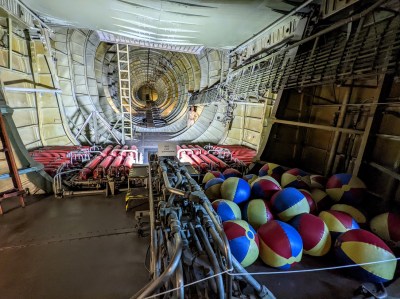
History records the short hop that Hughes flew as a breakthrough flight for such a large aircraft. Did the beach balls save the day? It’s hard to know.
Today, the beach balls still hold air, ostensibly the same that they were inflated with about 75 years ago. They serve as a reminder that the H4 was a prototype and not a final product. And it also helps us remember that engineers of all kinds and from all times, have one thing in common: They all love a good hack!
There are many other details that were gleaned during the tour, including the fact that the tail section nearly detached from the fuselage during the short hop- had Hughes flown much longer, a crash would have been inevitable! Look for the reinforced tail section in the photos below.
And if you ever get the opportunity to make your way to the Evergreen Aviation & Space Museum in McMinnville OR, USA, do it. Get the tour, sit in the seat, and live the history. Feel the rumble of the engines churning through the sea breeze. Smell the salty air, and know that your behemoth of an aircraft has something no other aircraft in history has had backing it up: Beach balls.

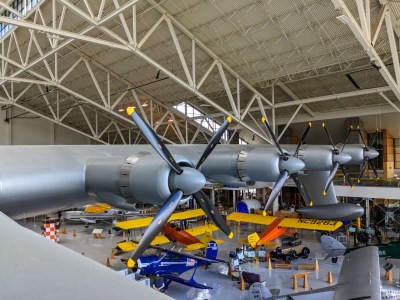

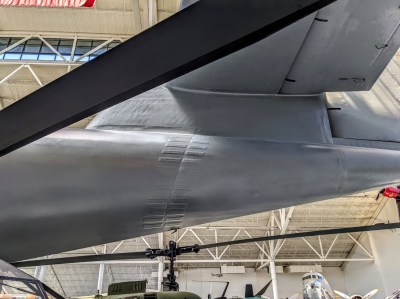

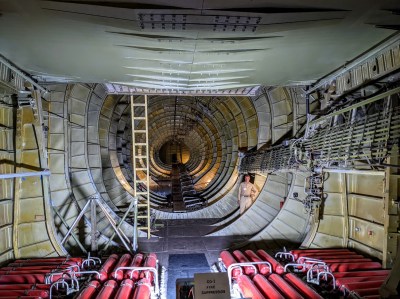
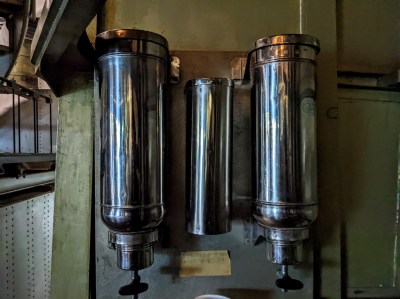

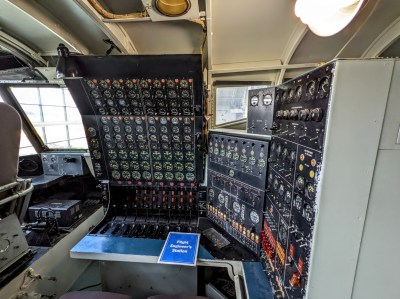
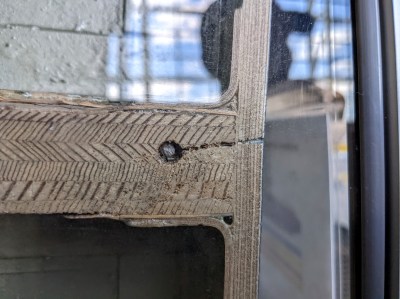

0 Commentaires